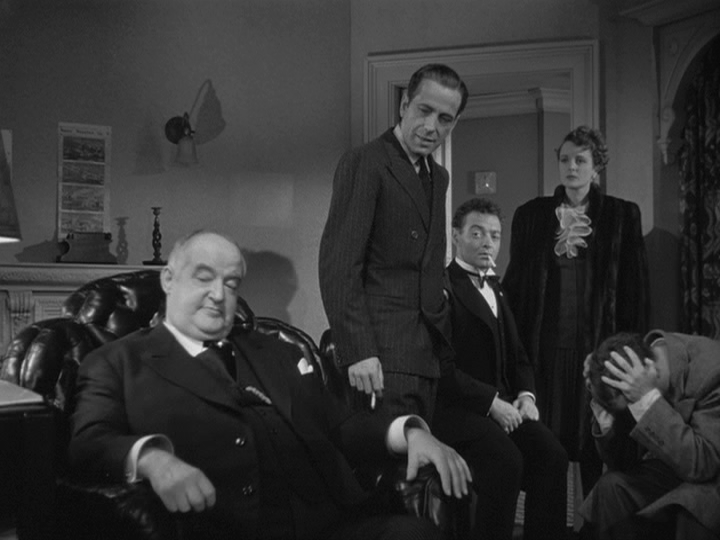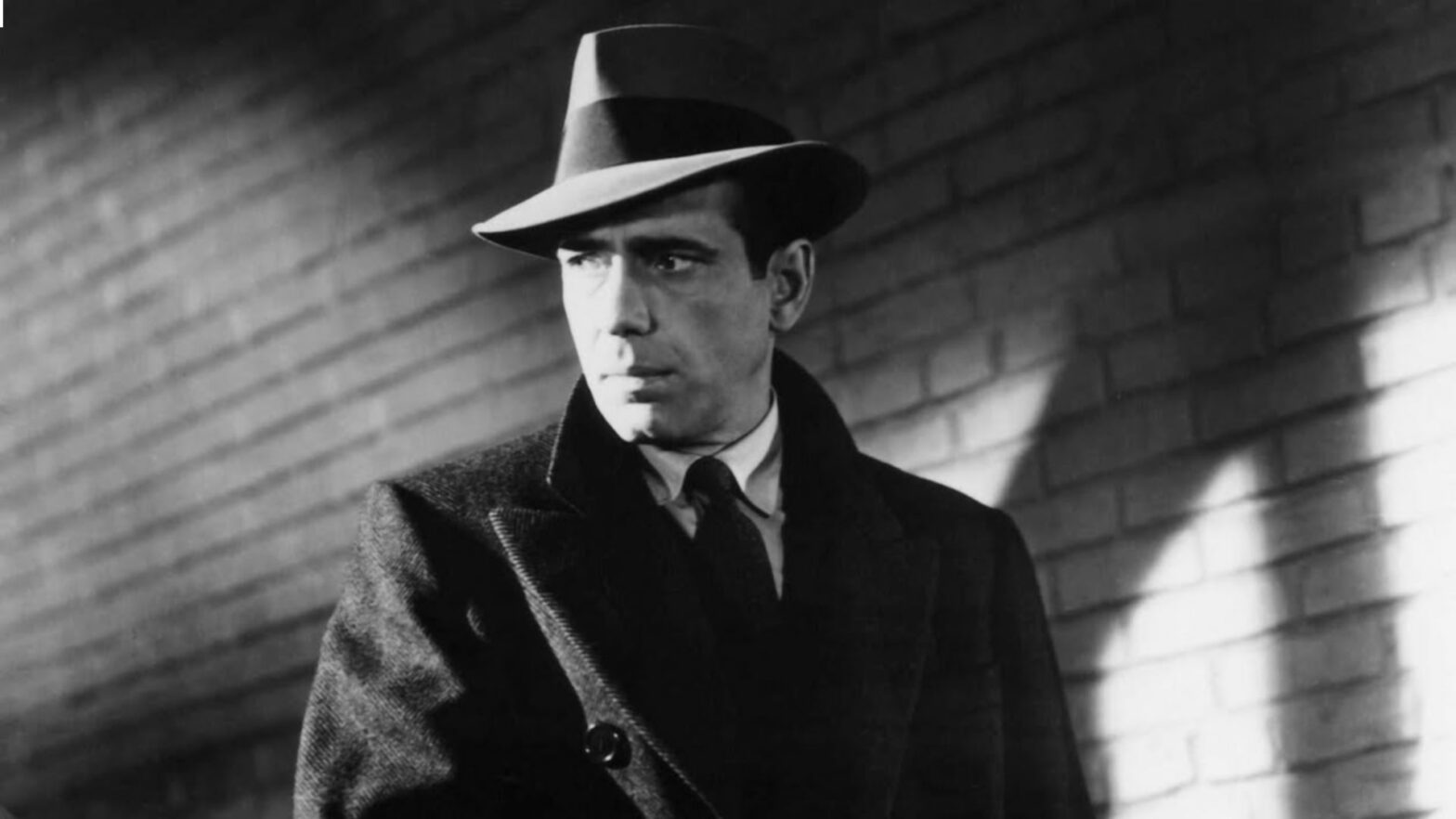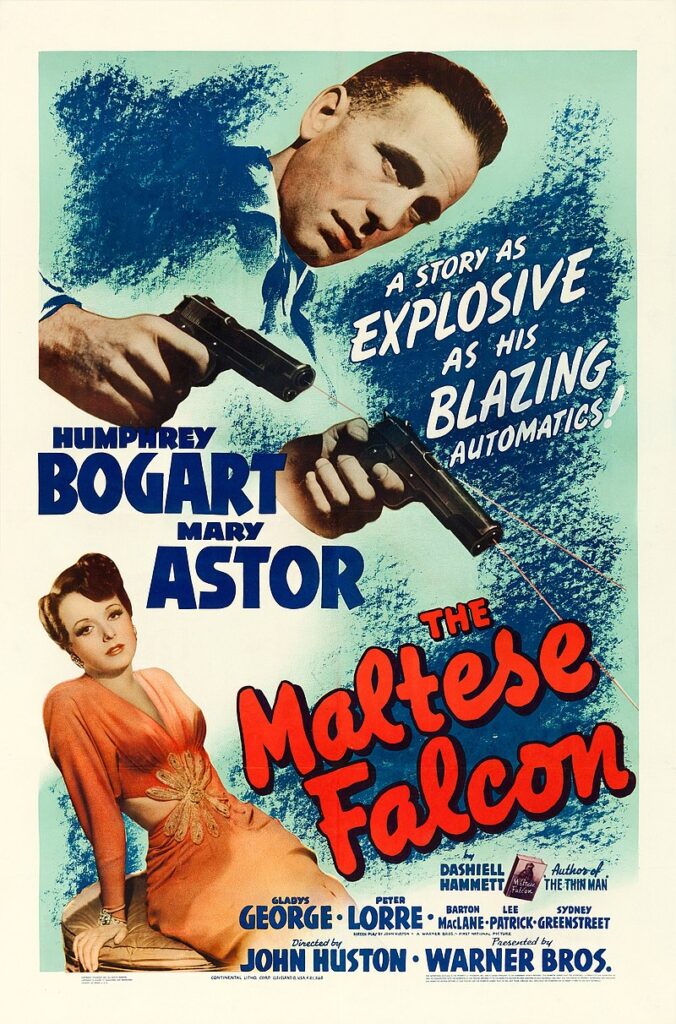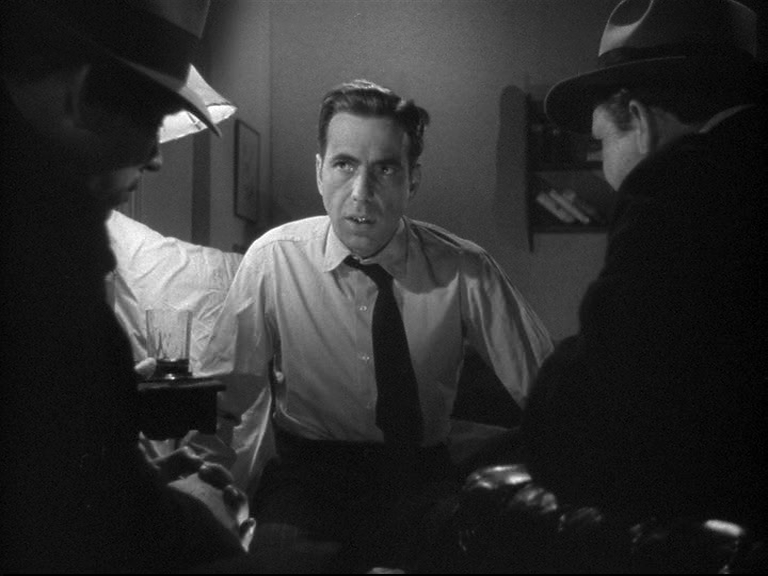
The Maltese Falcon (1941) was the nothing short of astonishing directorial debut of John Huston. He meticulously planned it shot for shot while writing the screenplay, incorporating the notes directly onto the page along with sketches of each shot.
By doing the work first, Huston was able to fine tune and improve on much of the camera work and positioning of the actors, and in so doing crafted the prototype Film Noir, which would come into true being three years later with Billy Wilder’s Double Indemnity.
A Stunning Directorial Debut
Absolutely magnificent camera compositions with angles and closeups which convey both character status and internal thoughts abound in the movie. impressing while never distracting from the narrative. This is no ordinary film from the early 40s where you could often still see the vestiges of the static cameras, flat compositions and unfluid movement that marked many of the films of the 30s. Huston directs the actors flawlessly, never content to have an inactive actor in the shot just sitting or standing in the background without a sense of purpose. You know exactly how each feels and their place within the scene, or moment within the scene, without ever distracting or overreacting to what is happening in the scene.
Dissecting the compositions of The Maltese Falcon


The photos at left are a perfect example. Each character in these shots has a sense of purpose. You know exactly what each one is feeling.
In the bottom shot, Sidney Greenstreet is shocked that he has been outsmarted by Bogart. Bogart knows he’s got him. Peter Lorre eyes Bogart with disdain–Bogart has shown up his boss and protector.
You can do the same thing with the top photo. You know exactly what is going on.
Performances
None of the actors give a rotten performance. Humphrey Bogart, Sydney Greenstreet, Peter Lorre, Mary Astor, Ward Bond, Elisha Cook, and on and on. All of them are always spot on, due not just to their individual talents, but from detailed notes given to them by Huston combined with his handling of the actors on the set. The Maltese Falcon would have been the years stand out directorial debut in any other year. Unfortunately it was overshadowed by another film that also came out in 1941 called Citizen Kane.
Screenplay and Music
The screenplay flawlessly weaves what at first seems to be at least three disparate story lines into a cohesive narrative. Slowly intertwining them as Bogart learns more and more (perfect for a detective movie,) while at the same time never giving a clue to what comes next and it draws the audience right along with it. The film also masterfully blends humor, mystery and suspense and does so seamlessly with the use of music and Bogart’s performance. It’s never overbearing or obvious but subtle. Just enough to convey the intent without being distracting.
The Prototype Film Noir
The Maltese Falcon is considered to be the Film Noir prototype, though some insist on calling it the first Noir. Noir came to be known for many things that are here, but not in fully fledged form.
- Mary Astor’s character is the Femme Fatale by analysis. She manipulates Sam Spade (Bogart) but lacks the sexual charge, allure, and seduction of the true Femme’s that followed. Barbara Stanwyck in Double Indemnity, Lana Turner in The Postman Always Rings Twice, Ann Blyth in Mildred Pierce and Peggy Cummins in Gun Crazy. These characters manipulated the male through seduction but here it is through cunning. There’s one other big difference–rather than bringing disaster to the man that follows her, Astor’s character brings it onto herself.
- The film contains low key lighting but it lacks the high contrast common to Noir’s. The lighting techniques of the German Expressionists of the 1920’s are absent here but it was almost standard in the Noir’s yet to come.
- All Noir’s are crime stories, but the perpetrators here are not low level criminals, which is common to most Noir’s.
In other ways it mirrors Noir exactly. A crime drama with a detective as the central character. Other Noir leads were hapless grifters, aging boxers, law abiding citizens lured into a life of crime, and a victim of circumstance. Bogart’s portrayal is often cited as having solidified the Noir Detective image: cynical, fatalistic, and moral ambiguity, but also with a high sense of Justice.
Legacy of The Maltese Falcon
The Maltese Falcon was nominated for three Academy Awards, including Best Picture. it was chosen along with 24 other films to be the first selected for the National Film Registry in 1989. Eighty years later the film is as fresh as if were had been made yesterday. It is one of only 38 films from the 40s to hold a 100% fresh rating on Rotten Tomatoes. It’s still literally flawless. It plays just as well today as it did in 1941 and it influenced every Noir that followed.


















